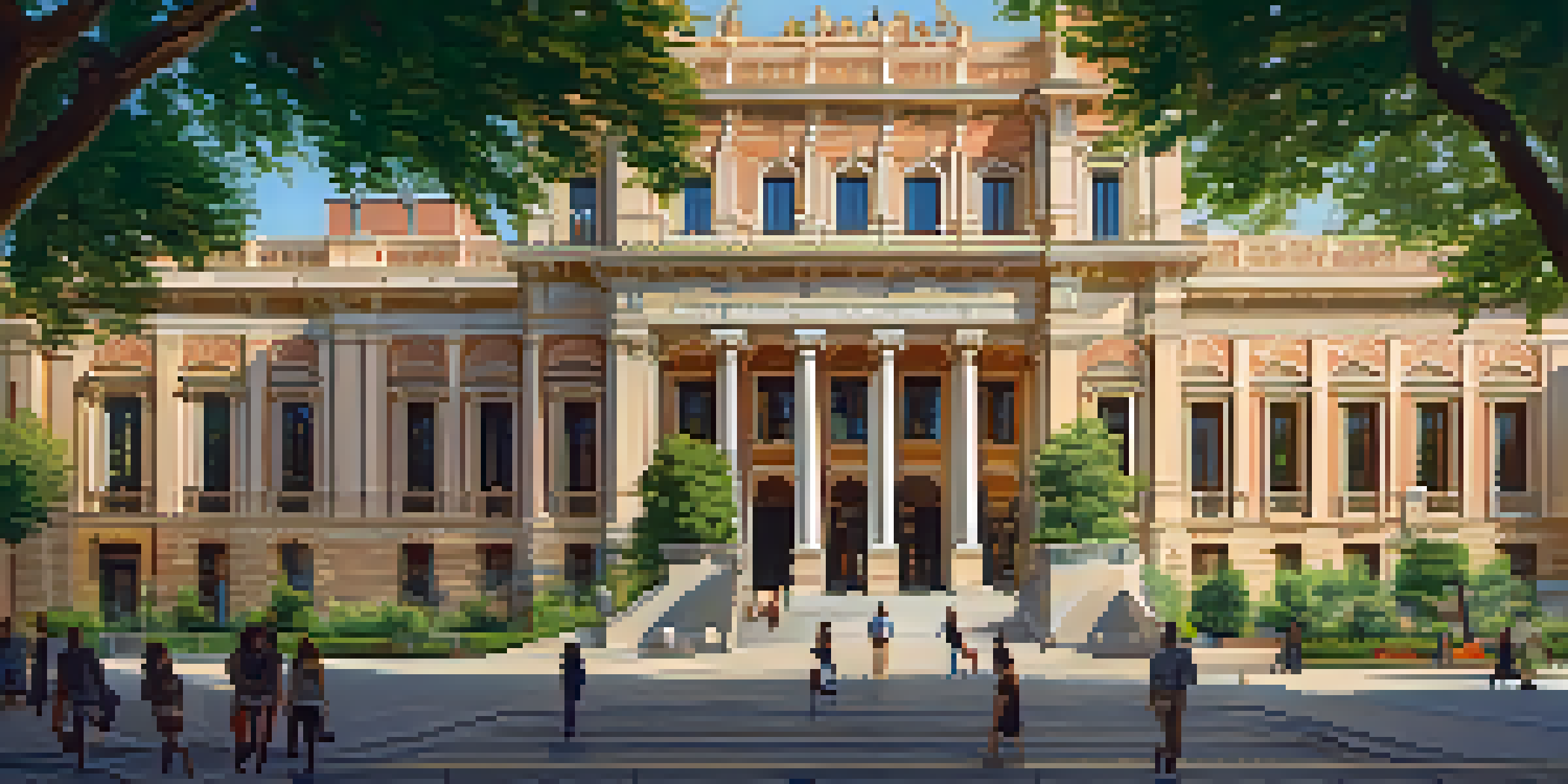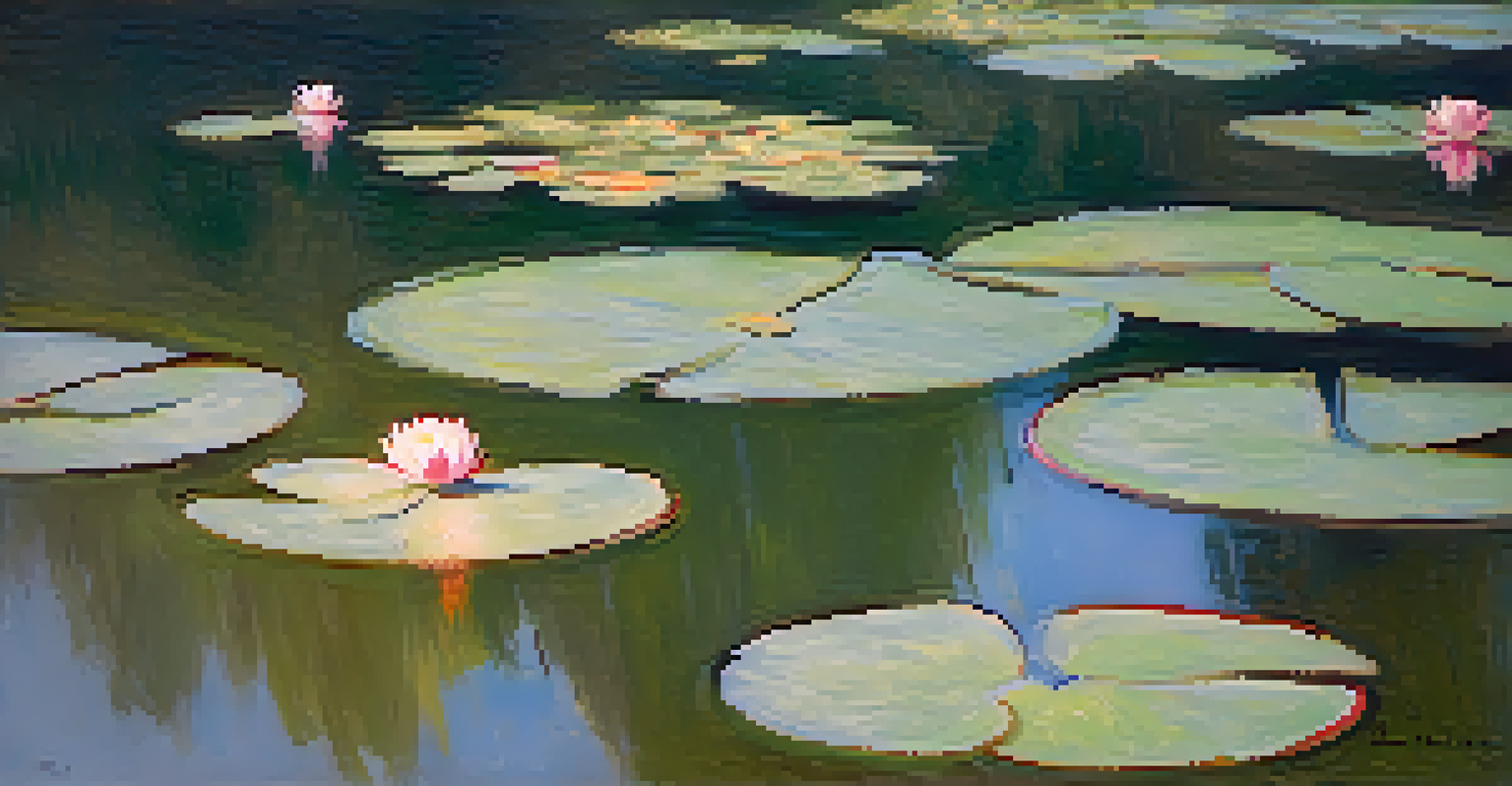Historical Treasures at the Thyssen-Bornemisza Museum

A Brief Overview of the Thyssen-Bornemisza Museum
The Thyssen-Bornemisza Museum, located in Madrid, is a gem of art history that houses an extensive collection of European paintings. Established in the late 20th century, this museum complements the nearby Prado and Reina Sofia, forming a triangle of cultural wealth. With over 1,000 works spanning from the 13th to the 20th century, it showcases masterpieces from renowned artists like Van Gogh, Rembrandt, and Monet.
Every artist dips his brush in his own soul, and paints his own nature into his pictures.
The museum's origins trace back to the private collection of the Thyssen-Bornemisza family, who amassed an impressive array of art over generations. When the collection was sold to the Spanish government, it marked a significant moment in making such treasures accessible to the public. Today, the museum plays a pivotal role in promoting art appreciation and education.
Visiting the Thyssen-Bornemisza is not just about viewing art; it's about experiencing history through the lens of creativity. Each piece tells a story, inviting visitors to engage with the past and reflect on the evolution of artistic expression.
Renaissance and Baroque Masterpieces
The museum boasts an impressive collection of Renaissance and Baroque art, displaying works that capture the cultural zenith of Europe. Artists like Titian, Caravaggio, and Rubens are represented, highlighting the dramatic shifts in style and technique during these periods. These paintings are not merely decorative; they provide insight into the societal values and beliefs of their times.

For example, Caravaggio's use of chiaroscuro—a technique that contrasts light and dark—creates a sense of depth and emotion that draws viewers into the scene. This technique was revolutionary, influencing countless artists in the years that followed. Visitors can witness how these historical contexts shaped the works and the artists' intentions.
A Treasure Trove of Art History
The Thyssen-Bornemisza Museum in Madrid houses over 1,000 European paintings, showcasing works from renowned artists across centuries.
The Baroque period, known for its grandeur and emotional intensity, is particularly well represented at the museum. The intricate details and vivid colors in these masterpieces continue to captivate audiences, making them a must-see for anyone interested in the evolution of Western art.
Impressionism and Post-Impressionism Highlights
Transitioning into the 19th century, the museum showcases remarkable pieces from the Impressionist and Post-Impressionist movements. Artists like Monet and Van Gogh brought a fresh perspective to art, focusing on light, color, and everyday scenes. This shift marked a departure from traditional techniques, emphasizing personal expression and the fleeting nature of life.
Art is not freedom from discipline, but disciplined freedom.
Monet's works, with their soft brush strokes and vibrant palettes, invite viewers to experience the beauty of nature in a new way. His famous series of water lilies exemplifies this, as it captures the changing reflections and light on the water throughout different times of day. Each painting serves as a reminder of the transitory moments that define our experiences.
Van Gogh's passionate brushwork and emotional depth resonate profoundly with audiences. Pieces like 'The Bedroom' and 'Sunflowers' not only showcase his unique style but also reflect his tumultuous life and mental struggles. These artworks create a dialogue about the artist's psyche and the influence of emotion on creativity.
Modern Art and Its Influences
As we move into the 20th century, the Thyssen-Bornemisza Museum presents an intriguing array of modern art that revolutionized the art world. This period introduced movements such as Cubism, Surrealism, and Abstract Expressionism, inviting artists to break free from traditional forms. Iconic figures like Picasso and Dali challenge viewers to rethink their perceptions of reality and art.
Picasso's innovative approach to form and perspective is evident in his works, which often portray multiple viewpoints within a single canvas. This technique not only transformed the visual landscape but also sparked debates about the nature of representation in art. Each piece encourages viewers to engage critically with the art and the world around them.
Engagement Through Education
The museum not only preserves art but also offers educational programs to deepen public understanding and appreciation of art history.
Surrealism, as exemplified by Dali's dreamlike imagery, invites exploration into the unconscious mind. His fantastical scenes blur the line between reality and imagination, prompting viewers to question their understanding of both. This genre's impact on contemporary art remains significant, as it continues to inspire new generations of artists.
The Role of the Museum in Cultural Preservation
The Thyssen-Bornemisza Museum serves a vital role in the preservation and promotion of cultural heritage. By housing these historical treasures, it not only safeguards them for future generations but also educates the public about their significance. The museum engages in various initiatives aimed at art conservation, ensuring that these masterpieces remain in excellent condition.
Additionally, the museum offers educational programs and exhibitions that foster a deeper understanding of art history among visitors. Workshops, lectures, and guided tours provide opportunities for individuals of all ages to connect with art in meaningful ways. This commitment to education enriches the experience for everyone who steps through its doors.
By acting as a cultural hub, the Thyssen-Bornemisza Museum encourages dialogue about the role of art in society. It invites diverse perspectives and interpretations, enriching the cultural landscape and inspiring creativity within the community.
Temporary Exhibitions: A Dynamic Experience
In addition to its permanent collection, the Thyssen-Bornemisza Museum hosts temporary exhibitions that highlight specific themes or artists. These exhibitions provide a dynamic experience for visitors, showcasing works that may not be part of the permanent collection. Through these rotating displays, the museum continues to engage with contemporary art discussions and trends.
For instance, exhibitions focusing on lesser-known artists or specific movements can shed light on overlooked aspects of art history. This approach not only educates but also sparks curiosity, encouraging visitors to explore beyond the well-trodden paths of famous artists. Each temporary exhibition acts as a fresh invitation to discover something new.
Dynamic Temporary Exhibitions
In addition to its permanent collection, the museum hosts temporary exhibitions that highlight specific themes, inviting fresh exploration of art.
These exhibitions often come with accompanying events such as talks, workshops, and guided tours, enhancing the overall experience. They create opportunities for interaction and learning, making art accessible and relatable to a broader audience. This commitment to innovation keeps the museum vibrant and relevant in an ever-evolving cultural landscape.
Planning Your Visit to the Thyssen-Bornemisza Museum
If you’re planning a visit to the Thyssen-Bornemisza Museum, preparation can enhance your experience. The museum is conveniently located in the heart of Madrid, making it accessible to both locals and tourists. It's a good idea to check the museum's website for information on current exhibitions, opening hours, and ticket prices before you go.
Consider setting aside a few hours to fully immerse yourself in the collection. With so many masterpieces to admire, a leisurely pace allows you to appreciate the details and stories behind each work. Don’t forget to take advantage of the guided tours offered, as they provide valuable insights that can deepen your understanding of the art.

Lastly, make sure to visit the museum shop and café after your tour. The shop offers unique art-inspired gifts and books, while the café provides a lovely spot to reflect on your visit. Enjoying a coffee surrounded by art can be a perfect way to wrap up your cultural journey at this incredible museum.